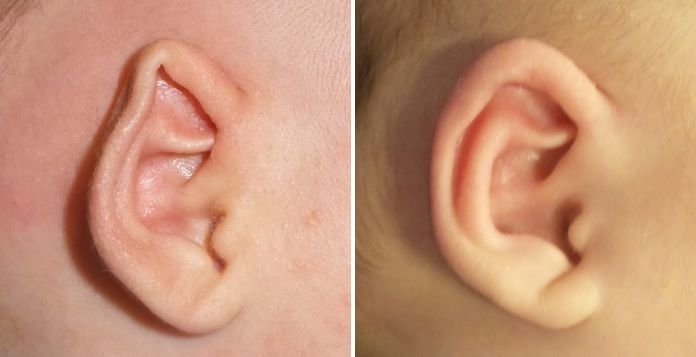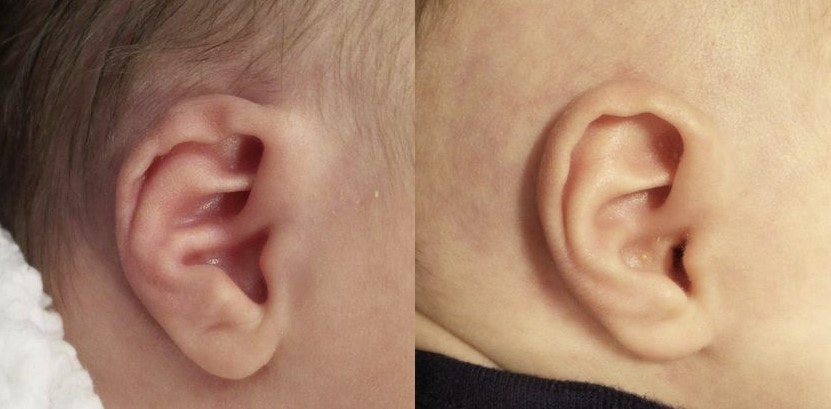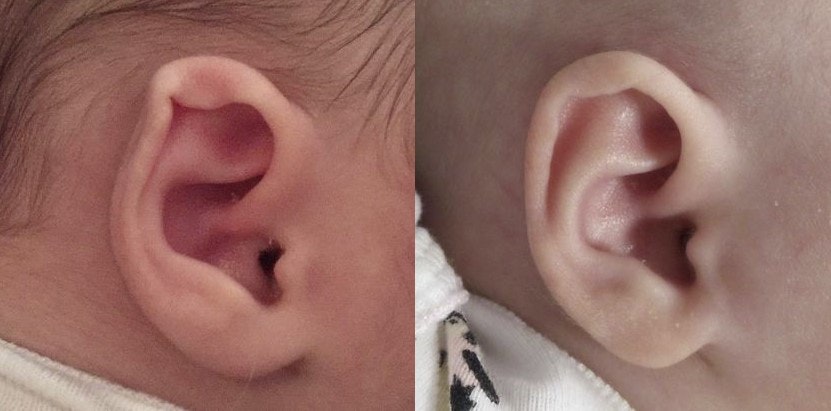If your newborn has helical rim ear deformities, Dr. Jandali can provide safe, effective ear molding to treat your baby’s ear condition. Parents will often call the office and say their baby has “funny looking ears”. This can sometimes be due to helical rim deformities which give an abnormal shape to the outer rim of the ear. Dr. Jandali can help them achieve more natural-looking ears without the use of surgery.
What Are Helical Rim Ear Deformities?
Helical rim ear deformities cause the outer rim of the ear to become compressed, wavy, or uneven in appearance. It is defined by its distortion of skin and cartilage between the scapha and rim of the ear. Its shape can vary and affect the upper, lower, or entire outer ridge of the ear’s rim.
Like many infant ear deformities, helical rim ear deformities don’t have a single proven cause. It’s believed that many ear deformities occur in the womb during development, and the ear becomes compressed and irregular in some way. They could also be genetic in origin. Helical rim ear deformities don’t cause hearing loss or difficulty but can be a source of embarrassment later in life as kids get teased and bullied for abnormal ear shape. Helical rim ear deformities can also be difficult to treat later in life, even with surgery.
Non-Surgical Correction in Babies with Helical Rim Ear Deformities
Dr. Jandali provides treatment that doesn’t involve surgery to treat helical rim ear deformities. With a silicone prosthesis, it is possible to address ear deformities without the use of surgical care. When this approach is used, it’s known as ear molding. The ear prosthesis is affixed along the helical rim of the baby’s ear, slowly bending its shape through gradually applied pressure. The total treatment period is typically about four to six weeks, though multiple treatment periods may be necessary in some more severe instances.
Ear molding is an excellent choice for those seeking treatment options for their infant’s ear deformity that don’t require surgical solutions.The preference for this type of treatment and its high success rate are due to the following factors:
- Responsive: During the first few months of your newborn’s life, high estrogen levels remain in their ear cartilage. This hormone causes the cartilage to remain malleable and correctable using this approach.
- Painless: This malleability means that the process isn’t painful for your newborn and does not cause any degree of irritation or discomfort.
- Effective: The typical period of treatment is four to six weeks. Sometimes, this isn’t sufficient to correct an existing deformity. The process can be repeated as necessary to obtain the desired outcome.
- Non-Surgical: By not using a surgical approach, several pitfalls are avoided. Among them are the risk of scarring, infection, and an uncomfortable healing process. Instead, ear molding provides an easy, painless, and highly effective approach to correcting ear deformities.
Dr. Jandali will monitor the molding process throughout the follow-up visits. During this process, he will make adjustments and potentially apply different silicone prostheses to ensure the desired results are achieved. The expertise and background that Dr. Jandali has accrued throughout the years helps ensure great results for his patients.
Ear Molding for Newborns with Helical Rim Ear Deformities
If you have a newborn with helical rim deformities, then non-surgical ear molding can help correct their ear shape to obtain beautiful and symmetric ears. Dr. Jandali offers non-surgical ear molding treatment for newborn ear deformities at his practice in Connecticut.
Helical Rim Correction Gallery




